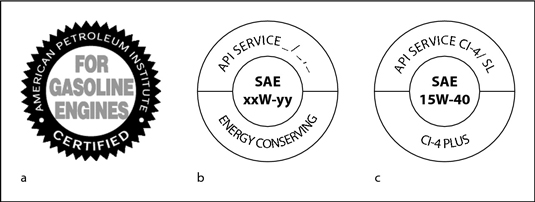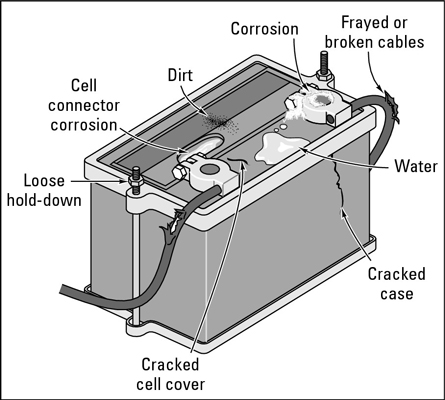Tips
How To Pick The Right Motor Oil
To choose the proper type of oil for your vehicle, you need to understand the significance of the oil additives, viscosity ratings, and classification codes.
-
Oil additives: To help the oil keep your engine cool, clean, and corrosion-free, refiners blend in various additives, which can account for as much as 25 percent of the cost of the oil.
-
Viscosity ratings: Oil is rated and identified by its viscosity, which determines its ability to flow.
Two types of oil are on the market: single-viscosity oil and multi-viscosity oil. Almost every vehicle is designed to run on multi-viscosity oil. The lower the number, the thinner the oil and the more easily it flows. In 10W-40 oil, for example, the two numbers mean that it’s a multi-viscosity oil. The 10W is an index that refers to how the oil flows at low temperatures (in Winter); 40 refers to how it flows at high temperatures.
To find out which viscosity to choose for your vehicle, look in your owner’s manual for an oil viscosity chart.
-
Oil classification codes: The starburst symbol on an oil container label means that the oil meets the current engine protection standard and fuel economy requirements of the International Lubricant Standardization and Approval Committee (ILSAC), a joint effort of U.S. and Japanese automobile manufacturers.
 (a) API starburst symbol, (b) API donut symbol for gasoline engine oil, and (c) API donut symbol for diesel engine oil.
(a) API starburst symbol, (b) API donut symbol for gasoline engine oil, and (c) API donut symbol for diesel engine oil. -
Synthetic oil: Some claim that synthetic oils allow longer intervals between oil changes, result in less wear on engine parts, and operate at higher engine temperatures. The longer interval claim has yet to be proven.
more info: http://www.dummies.com/how-to/content/how-to-choose-the-right-motor-oil.html
How to Check Your Car Battery
A battery, like other parts of your vehicle, is subject to wear and tear and should be checked regularly. In particular, pay attention to the battery’s trouble spots, shown here. A battery that’s kept clean lasts longer than a cruddy one.

Before you work on your battery, be sure to read all the safety measures involved. Here’s a rundown:
-
Never work on a battery with a lit cigarette in your mouth. Batteries are filled with sulfuric acid that generates hydrogen gas. If you get acid deposits on your skin or clothes, wash them off with water immediately.
-
Disconnect the battery whenever you work on it, but be sure to shut the engine off first! On most modern vehicles, computers control functions of the engine, fuel and ignition systems, automatic transmissions, and other stuff. Be extremely careful not to inadvertently send a shot of unwanted voltage into one of the computers and destroy it.
-
Always remove the negative cable from the battery if you plan to work on wiring under the hood. This prevents you from possibly damaging electrical components or receiving a shock.
-
When removing and replacing both battery cables, always remove the negative cable first and replace it last. If you attempt to remove the positive clamp first and your wrench slips and touches something metal, your wrench can fuse to the part like an arc welder.
-
Tie the cables back while you work on the battery. Don’t allow anything made of metal to connect the terminal posts; this can damage the battery. If the cables are connected to the posts when something else interferes, you can destroy the onboard computers.
more info: http://www.dummies.com/how-to/content/how-to-check-your-car-battery.html
10 Fuel Saving Tips Every Driver Should Know
- Make fewer trips. Did you know that when you drive a car that has been parked for a few hours, the engine is cold and it uses much more fuel for the first five miles or so? Ideally you’d combine all your daily errands into one big trip. Often that’s not possible if you have to pop out during the day to drop off and collect the family, but try not to go out separately to do the supermarket shop or buy a newspaper.
- Don’t drive in the rush hour. There are few worse places to spend your time than stuck in a traffic jam, but it’s also a very expensive way of travelling. Every time that you stop and start in traffic, your car needs first gear and a huge amount of fuel to get moving again. Second gear is not much better. The best solution is to not travel during the rush hour. You can also save some fuel by trying to understand what the traffic is doing in front of you, and travelling steadily at a slow speed, rather than accelerating and braking. If you have to travel in rush hour a lot, then you could consider buying a hybrid car, which uses much less fuel in town than a normal petrol or diesel.
more info: http://www.telegraph.co.uk/cars/advice/10-fuel-saving-tips-every-driver-should-know/
